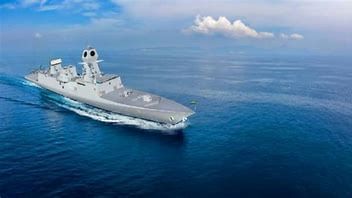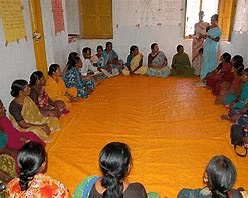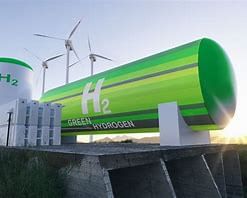UPSC Daily Current Affairs- 11th March 2024 | Current Affairs & Hindu Analysis: Daily, Weekly & Monthly PDF Download
GS-I
Academy Awards
Subject: Art and Culture

Why in News?
Recently, the highly anticipated 96th Academy Awards ceremony concluded with flair at the Ovation Hollywood in Los Angeles.
About Academy Awards:
- Overview of Oscars: The Oscars, officially known as the Academy Awards, are prestigious accolades in the film industry, recognizing both artistic and technical excellence. They are presented annually by the Academy of Motion Picture Arts and Sciences (AMPAS).
- History and Significance: Instituted in 1929, the Oscars hold international acclaim for their recognition of cinematic achievements. Winners receive a coveted gold-plated statuette known as the Oscar.
- Categories and Criteria: The Oscars consist of 24 categories, covering aspects like best picture, acting, directing, and screenwriting (both original and adapted). Winners are chosen based on their exceptional merit in their respective fields.
- Nomination Process: Only members of the Academy of Motion Picture Arts and Sciences are eligible to nominate and vote for Oscar candidates.
- Branches and Selection: The academy is segmented into various branches representing different aspects of film production. Nominees in each category are selected by members of the corresponding branch.
- Voting Procedure: While branch members nominate candidates, the entire academy membership participates in selecting winners for most categories. However, for best picture, all members nominate and vote for the winner.
- Distinctive Recognition: Winners are awarded a golden statuette officially known as the "Academy Award of Merit," commonly referred to as the Oscar.
Source: Indian Express
GS-II
France enshrines Right to Abortion in Constitutio
Subject: Polity and Governance
Why in News?
France’s historic decision to enshrine the right to abortion in its constitution marks a pivotal moment in the global struggle for women’s reproductive rights.
- Against the backdrop of International Women’s Day, this groundbreaking amendment underscores France’s commitment to upholding women’s autonomy and healthcare choices.
Abortion in France: Legislative Progression
- National Assembly and Senate Approval: Initially passed by the National Assembly in January, the amendment received unanimous support from the Senate last week, culminating in a joint parliamentary session for final ratification.
- Bipartisan Consensus: With an overwhelming majority of legislators voting in favor, the reform underscores broad bipartisan consensus on safeguarding women’s reproductive freedoms.
- Constitutional Modification: The amendment elevates abortion from a statutory right to a constitutionally guaranteed freedom, solidifying its legal protection against potential legislative changes.
Amendment Provisions
- Constitutional Revision: The amendment revises Article 34 of the French constitution, stipulating that women’s freedom to terminate pregnancies is constitutionally guaranteed.
- Preservation of Existing Rights: By mandating that future legislation uphold existing abortion laws, the amendment ensures continuity and stability in reproductive healthcare policies.
- Global Context: Acknowledging global trends of encroachment on abortion rights, the legislation reaffirms France’s commitment to resisting regressive measures that curtail women’s autonomy.
Global Implications
- Unprecedented Precedent: France becomes the first nation to embed abortion rights in its constitution, setting a groundbreaking precedent for global reproductive justice movements.
- European Landscape: Amidst escalating efforts to restrict abortion access in some European countries, France’s bold initiative offers a beacon of hope and inspiration for defenders of reproductive rights across the continent.
- European Charter of Fundamental Rights: The amendment’s resonance with fundamental rights principles may catalyze broader efforts to incorporate abortion protections into the European Charter of Fundamental Rights.
Public Reception and Political Landscape
- Public Support: Reflecting widespread public sentiment, opinion polls indicate overwhelming support for constitutionalizing abortion rights, with 81% of respondents endorsing the reform.
- Political Consensus: Unlike the polarized discourse on abortion in some countries, France’s political spectrum exhibits remarkable unity in upholding women’s reproductive autonomy.
- Criticism and Allegations: While critics decry the reform as a political maneuver by President Macron to court left-leaning factions, its substantive impact on women’s rights remains undeniable.
Global Abortion Landscape
- European Context: Against the backdrop of escalating abortion restrictions in some European nations, France’s progressive stance contrasts starkly with regressive measures adopted elsewhere.
- Global Reverberations: France’s pioneering initiative may reverberate globally, emboldening movements to advance abortion rights and combat legislative regressions worldwide.
India’s Abortion Policies
- Legal Framework: India implemented the Medical Termination of Pregnancy (MTP) Act in 1971, allowing abortions under specific conditions up to 20 weeks, with recent amendments extending the limit to 24 weeks in certain cases.
- Recent Amendments: The 2021 amendment extends the permissible gestational limit for abortions and streamlines the approval process for certain categories of pregnancies.
- Continued Advocacy: While India’s legal framework for abortion is comparatively progressive, ongoing advocacy efforts seek to further enhance access to safe and legal abortion services nationwide.
Conclusion
- By embedding abortion rights within its constitutional fabric, France sets a transformative precedent for advancing women’s autonomy and healthcare choices worldwide.
- As the international community grapples with escalating threats to reproductive rights, France’s bold stance offers a beacon of hope and solidarity for women everywhere, underscoring the imperative of safeguarding reproductive freedoms as fundamental human rights.
Source: Indian Express
GS-III
Exercise Cutlass Express
Subject: Defence and Security

Why in News?
INS Tir, the lead ship of First Training Squadron (1TS) participated in Exercise Cutlass Express - 24 (CE – 24) held at Port Victoria, Seychelles
About Exercise Cutlass Express:
- Purpose of Exercise: Conducted in East African coastal regions and the West Indian Ocean, the exercise aims to counter malign influence, aggression, and activity in overlapping maritime regions.
- Sponsor and Leadership: Cutlass Express is sponsored by U.S. Africa Command (AFRICOM) and led by U.S. Naval Forces Europe-Africa/U.S. Sixth Fleet.
- Participating Nations and Organizations: It is a premier multinational maritime exercise that brings together maritime forces from East Africa, West Indian Ocean nations, Europe, North America, and various international organizations.
- Objectives: The exercise focuses on enhancing maritime law enforcement capacity, promoting national and regional security, and increasing interoperability among participating nations.
- Training Focus: Training includes theoretical and practical aspects of Maritime Interdiction Operations, Visit Board Search and Seizure (VBSS) procedures, and diving operations.
- Demonstrations: During the sea phase, practical demonstrations are conducted, such as the ship's VBSS team boarding the Seychelles Coast Guard (SCG) ship LE Vigilant to showcase boarding procedures.
- Indian Navy Participation: As part of Cutlass Express 2024, the Indian Navy actively engaged with participants from 16 friendly foreign countries. The Indian Navy has been participating in the exercise since 2019.
Source: PIB
Self Help Group – Bank Linkage Programme
Subject: Economy

Why in News?
The Prime Minister of India on 11th March will disburse around Rs 8,000 crore Bank loans to Self Help Groups (SHGs) at subsidised interest rate through Bank Linkage Camps set up by Banks in each district.
About Self Help Group – Bank Linkage Programme:
- Origins: Launched by NABARD (National Bank for Agriculture and Rural Development) in 1992, the Self Help Group (SHG) Bank linkage project has grown into the world's largest microfinance initiative.
- Objective: The project aims to provide financial services to the unreached and underserved poor households in a cost-effective manner.
- Components of SHG Bank Linkage:
- Training and Sensitization of Bank Branch Managers: This component involves providing training to bank branch managers to familiarize them with the SHG model and sensitize them to the needs of the rural poor.
- Training and Positioning of Bank Sakhis: Bank Sakhis are trained personnel positioned at rural bank branches to facilitate the implementation of the SHG Bank linkage project. They serve as intermediaries between the banks and the SHGs.
- Initiation of Community-Based Repayment Mechanism (CBRM): This involves establishing a mechanism at rural bank branches for community-based repayment of loans taken by SHGs. This mechanism fosters collective responsibility and helps in timely repayment of loans.
- Credit Linkage of SHGs: This component involves facilitating the linkage of SHGs with formal financial institutions such as banks for access to credit. SHGs are encouraged to save regularly, and their savings are leveraged to access credit from banks for various income-generating activities.
What are Self-Help Groups?
- Definition: Self-Help Groups (SHGs) are small, informal, and voluntary associations comprising individuals, often from similar socio-economic backgrounds, who unite to address common social and economic needs.
- Empowerment Focus: SHGs primarily aim to empower their members, particularly women, through mutual support, collective decision-making, and skill development.
- Panchsutras Principles: SHGs that adhere to the "Panchsutras" principles are considered of good quality. These principles include:
- Regular Group Meetings: Members meet regularly to discuss issues, share experiences, and plan activities.
- Regular Savings within the Group: Members contribute savings to a common fund, which is used for internal lending and emergencies.
- Internal Lending based on Member Demand: Loans are provided internally to members based on their needs and repayment capacity.
- Timely Repayment of Loans: Members repay their loans on time, ensuring the sustainability of the group's financial activities.
- Maintenance of Proper Books of Accounts: Accurate records are kept of the group's financial transactions, ensuring transparency and accountability.
- Banking Relationship: SHGs that adhere to these principles have proven themselves to be reliable customers of banks over the years. They are often considered creditworthy and are able to access financial services and support from formal financial institutions.
Source: PIB
Green Hydrogen
Subject: Environment

Why in News?
The Ministry of New and Renewable Energy (MNRE) plans to convene a meeting with relevant stakeholders to discuss the development of specialised cylinders for green hydrogen storage.
About Green Hydrogen:
- Hydrogen Production: Hydrogen is produced through electrolysis of water, using electricity generated by renewable energy sources. The carbon intensity of hydrogen production depends on the carbon neutrality of the electricity source, with higher renewable energy content leading to "greener" hydrogen.
- Decarbonization Potential: Hydrogen holds significant potential to decarbonize various sectors, reduce carbon emissions, and achieve energy independence.
- Sustainability and Environmental Friendliness: When produced using renewable energy sources like solar, wind, and hydropower, hydrogen production is sustainable and environmentally friendly. It can serve as a clean alternative to traditional fossil fuels in transportation and industry, offering a constant and reliable energy source.
- Storage and Cylinder Types: Hydrogen is stored in cylinders at much higher pressures compared to compressed natural gas (CNG). Gas cylinders are categorized into four types based on the materials used. Type 1 and Type 2 are suitable for storage, while Type 3 is preferred for storage and transportation, and Type 4 is recommended for on-board storage.
- Pressure Range: Hydrogen is stored at pressures ranging between 5,000-10,000 psi, significantly higher than CNG.
- Vehicle Powering Methods: Vehicles can be powered by hydrogen in two ways: burning it in an internal combustion engine or using a fuel cell to convert it into electricity, which charges on-board batteries.
- Cylinder Construction: Both Type 3 and Type 4 cylinders are reinforced with carbon fiber, making them lightweight and suitable for vehicle use. Type 4 cylinders are even lighter as they are lined with a polymer instead of the aluminum lining found in Type 3 cylinders.
Application of Green hydrogen
- It has numerous applications and can be used in fuel cells to power vehicles and provide electricity. It can also be used in heating systems and in the production of chemicals and fertilizers.
- Furthermore, Green Hydrogen can be used in microgrids, providing electricity to remote areas and enabling energy independence.
Source: Indian Express
India-EFTA Trade Pact: A Game-Changer in Economic Cooperation
Subject: Economy

Why in News?
India has inked a momentous Free Trade Agreement (FTA) with the European Free Trade Association (EFTA), comprising Iceland, Liechtenstein, Norway, and Switzerland.
- The accord, aimed at attracting a staggering $100 billion in investment over 15 years, signifies a significant leap towards diversifying imports and forging robust economic ties with key European nations.
About the European Free Trade Association (EFTA) Bloc
| Description | |
| Member | Iceland, Liechtenstein, Norway, Switzerland |
| Formation | Established in 1960 by seven European countries as an alternative trade bloc to the EU |
| Trade Relations | Free trade agreements among themselves and with other regions |
| Activities | Participate in European Single Market through the EEA Agreement |
| Institutions | EFTA Court, EFTA Surveillance Authority, EFTA Secretariat |
| Relationship with EU | Not part of the EU, But have close economic ties and trade agreements with EU countries |
Why was this FTA revived?
- Resurgence of Talks: The trade deal comes to fruition after a hiatus of 16 years, during which discussions were stalled due to differences between the parties.
- Strategic Realignment: Evolving geopolitical dynamics and mutual interests in reducing dependence on China played a pivotal role in reigniting negotiations and reaching a consensus.
Key Decision
- Investment Commitments: EFTA countries pledge to invest $100 billion in India, aiming to generate 1 million jobs within 15 years, demonstrating a shared commitment to mutual prosperity and development.
- Market Access: The agreement ensures enhanced market access for both goods and services, with provisions for tariff concessions and non-discriminatory treatment of service providers.
- Sectoral Focus: Priority sectors such as pharma, chemicals, minerals, and services receive particular attention, reflecting the potential for growth and collaboration in these areas.
Key Highlights of the Trade Pact
- Scope of Agreement: The agreement covers tariff concessions for pharma, chemical products, minerals, and other key sectors, facilitating enhanced bilateral trade relations.
- Binding Commitments: The pact includes a binding commitment to increase FDI from EFTA states into India by $50 billion within the first ten years and an additional $50 billion in the subsequent five years.
- Mechanisms for Investment Facilitation: The agreement outlines mechanisms to facilitate investment flows from the private sector in EFTA countries, ensuring transparency and accountability.
- Rebalancing Concessions: Provisions are in place to withdraw tariff concessions if the expected investment commitments are not met, ensuring accountability and adherence to agreed-upon terms.
- Market Access Commitments: The agreement opens avenues for Indian service providers, particularly in audio-visual services, with commitments from EFTA nations to ensure non-discrimination and market access.
- Visa Facilitation: EFTA countries have provided visa categories for intra-corporate transferees and independent professionals, enhancing opportunities for Indian service providers.
- Tariff Reduction: The agreement entails the elimination of tariffs on industrial goods exported to India by EFTA companies, including pharmaceuticals, machinery, watches, and chemicals.
- Agricultural Products Exemption: While agricultural items are largely excluded, meaningful tariff concessions have been granted for both basic and processed agricultural products.
Significance of the FTA’s Timing
- Election Concerns: With numerous countries, including India, embarking on electoral processes, the window for negotiating free trade agreements (FTAs) may narrow significantly. Seizing the moment is imperative amid a global shift in supply chains away from China.
- Geopolitical Opportunity: As global investors eye alternative destinations, delays in fostering investment flows and global integration could result in missed geopolitical advantages for India.
- Addressing Trade Deficit: India seeks to mitigate trade deficits prevalent with many trading partners, including ASEAN nations. While previous FTAs provided access to intermediate goods, India’s relatively high average tariffs disadvantaged its position, granting preferential market access to FTA partners.
Challenges in India-EFTA Trade Agreement
- Limited Tariff Benefits: Existing zero or low tariffs in EFTA countries limit the potential gains for Indian goods exports, particularly in industrial and agricultural sectors.
- Trade Deficit Concerns: India’s significant trade deficit with EFTA, especially driven by imports of gold and precious metals, raises concerns about the imbalance in trade relations.
- Market Access Limitations: The scope for increasing market access for Indian goods in EFTA remains low, posing challenges for trade expansion efforts.
- Competition from Other Countries: EFTA investment commitments may face competition from other countries like Vietnam and Mexico, potentially impacting India’s ability to attract investment.
- Political Uncertainty: The timing of signing the agreement is crucial due to upcoming elections in many countries, which could delay future trade agreements and geopolitical opportunities.
Opportunities in India-EFTA Trade Agreement
- Investment Inflow: Commitments for $100 billion in investment over 15 years offer significant economic opportunities, including job creation and sectoral growth.
- Services Sector Development: The agreement could bolster India’s services sector, enhancing its competitiveness and contributing to economic growth.
- Sectoral Benefits: Key sectors like pharma, chemicals, food processing, and engineering stand to benefit from investment inflow, potentially reducing dependency on imports from China.
- Joint Ventures: Collaboration in identified sectors through joint ventures could facilitate technology transfer, skill development, and product diversification.
- Wider Economic Impact: Investment from EFTA countries, including Norway’s substantial sovereign wealth fund, could stimulate economic activity and fuel India’s growth trajectory.
Conclusion
- The forthcoming trade agreement with EFTA signals a paradigm shift in India’s trade dynamics, emphasizing economic diversification and bolstering strategic sectors.
- As India navigates evolving global trade landscapes, leveraging investments from EFTA nations presents an opportunity to stimulate growth, foster innovation, and reduce dependency on a single market.
Source: Indian Express
|
38 videos|5244 docs|1106 tests
|
FAQs on UPSC Daily Current Affairs- 11th March 2024 - Current Affairs & Hindu Analysis: Daily, Weekly & Monthly
| 1. What is the significance of the India-EFTA Trade Pact in economic cooperation? |  |
| 2. What is Exercise Cutlass Express? |  |
| 3. How does the Self Help Group – Bank Linkage Programme benefit communities? |  |
| 4. What is Green Hydrogen and its significance in the context of sustainable energy? |  |
| 5. How do the Academy Awards (Oscars) impact the film industry and recognition of talent? |  |
















